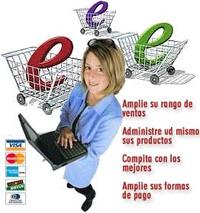A-Clue.Com will cease in its present form at the end of the year. That does not mean it will cease, not at all.
A-Clue will become a regular weekly feature here, at the www.danablankenhorn.com blog. It’s actually been that way all this year. Most of this past year’s Clue essays are already archived here. The main A-Clue site will stay open with the old archives, and links to the rest of my work.
I’m doing this mainly because e-mail is a dieing e-business model, and I don’t ever want to be yesterday. I’m also spending several hours each week coding and loading each week’s issue, time that could be spent writing.
To celebrate this change I will have five essays on the main topics this blog has covered in its decade of e-mail existence, looking mainly at their present and future. First will come e-commerce, the original beat here. Then I will have essays on Moore’s Law, on Always-On, and on Political Cycles, before finishing up with a big Internet Future essay.
Enjoy.
E-commerce has become commerce. (Illustration by SercomGroup.)
What began as a separate channel has replaced the back end of the catalog business, while stores have adopted most e-commerce innovations.
The biggest problem merchants face is the cost of scaling, especially the technology scaling needed for a competitive user experience. Most have also found that the final profit margins in selling goods online are minimal, and that as they scale their online operations they need a physical presence.
This may or may not remain the case as gas prices rise. I still insist a business can be made with convenience stores accepting deliveries for local residents, delivering them at the consumer’s convenience, and adding special orders based on intimate customer interaction. (Since the name Jeeves is taken, how about calling it Godfrey?)
The history of Amazon.Com is instructive here. They were always
ambitious, and tried to stay well ahead of the curve in their
technology platform, with their associates program, and in scaling
their warehouses. But the delicate balance required for that finally
ate into margins, and as mainstream merchants like BestBuy and WalMart
improved their own technology platforms, they saw their future closing
down. Thus they have spent this last year trying to move into the sale
of digital goods, even though they have no reputation in that area.
Most small merchants who experimented with e-commerce in the 1990s
found that they were best served using it as an adjunct to existing
operations. As Mark Twain wrote, "put all your eggs in one basket and
watch that basket." Powells in
Portland is a good example of this. Over time they have added a blog,
and their online selection is better organized than the clutter of
their shops, but most of the shops are also less-cluttered now. The
point is that if you go to the store, you are likely to use the site,
and if you don’t you aren’t. For Powell’s e-commerce proved an
essential defensive measure but nothing more.
That is the way it has been for most retailers. The site is an
essential channel to buttress the store, and the store is essential to
the success of the site.
What I have suggested, this year, is that a new evolution is necessary.
It’s time to get production involved.
The largest merchants are already doing this. The success of
WalMart this past decade is based almost entirely on the integrated
dance of just-in-time supply, not just demand management. The company’s
efforts lately have been directed toward RFID so that production can be
managed, minimizing the need for warehouses. These technology chains
have extended overseas, which also gives it a huge leg-up in opening
stores in new markets. This goes well beyond the original dream of Sam
Walton, which was to bring urban selection to the countryside. What we
have now is worldwide supply-and-demand integration, with WalMart’s
computers the primary intermediaries for goods suppliers worldwide. Now
if that’s not an e-commerce play, what is it?
When I talk about getting production involved, however, I am
talking about bringing local ideas and local production to the Web.
Small entrepreneurs with experience in online selling should now be
looking to create local products, starting with the goods tourists look
for when they travel. By creating an online demand for locally-produced
jams, juices, pottery, knicknacks, woodworking, toys, clothing, etc.
you can then get these same goods into local stores, bringing back the
unique brand of a place. There is no reason why Philadelphia should
ever be the same as Detroit, in what’s available to visitors, but right
now it is, and that is an opportunity.
All this, however, is based on an economics of scarcity, on the
merchant being the agent for the supplier of a product, seeking to
convince the consumer to part with their money. What the Internet as a
whole is bringing about is an economics of abundance, in which the
merchant is the agent for the consumer of products, saving them
valuable time and monetizing that time with merchants.
This has become apparent first with the success of sites like
YouTube, MySpace and Google, and it’s hard for most of us to get our
heads around, because it turns all economic relationships on their
head. That’s why these first consumer intermediaries are so large and,
right now, so valuable. It’s a completely different type of economics.
But this area is not going to always be dominated solely by a
few big players. Don’t let the mass media hype get you down. There are
going to be plenty of ways to build small companies based on the
economics of abundance. Some will initially look like the old
economics, agenting for producers who have little access to this new
market. But this, in fact, is where the media business should be
heading, toward acting as an intermediary of abundance, on a level
closer to the customer.
The idea of replacing the local newspaper, something I talked about
when I first got into this business nearly 30 years ago now, is still
on. We just need to find the hook for it.













